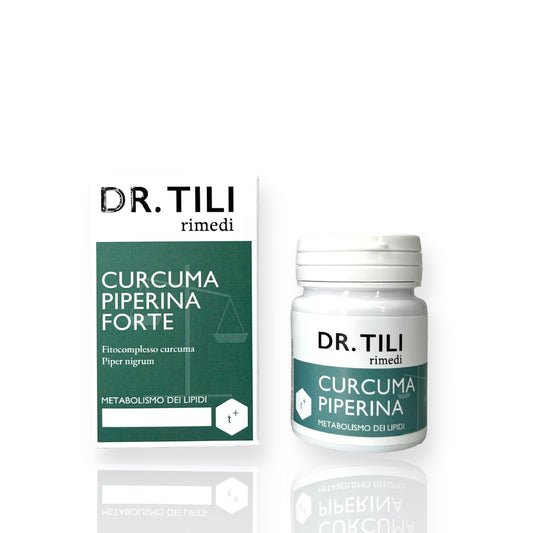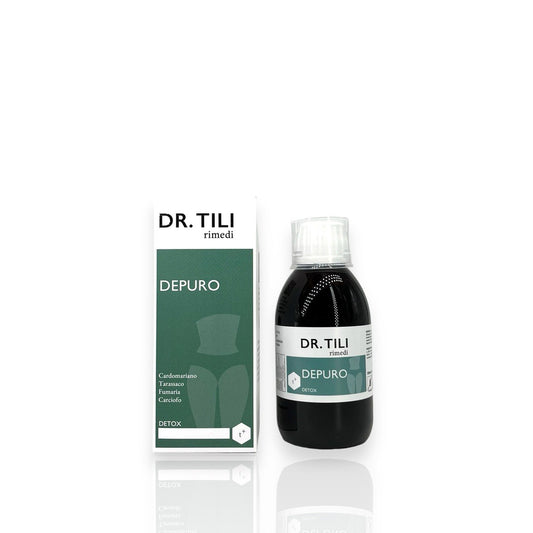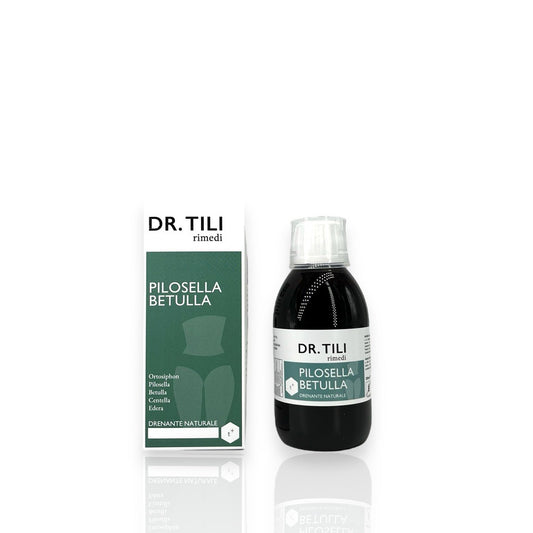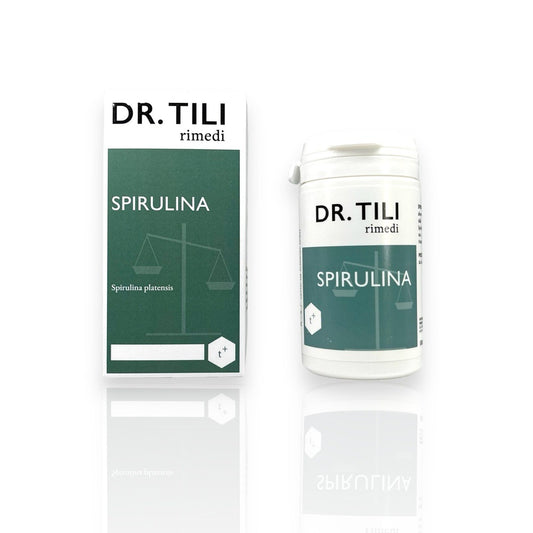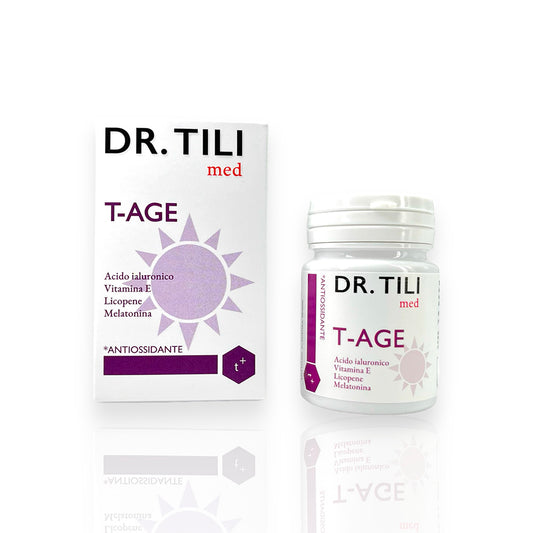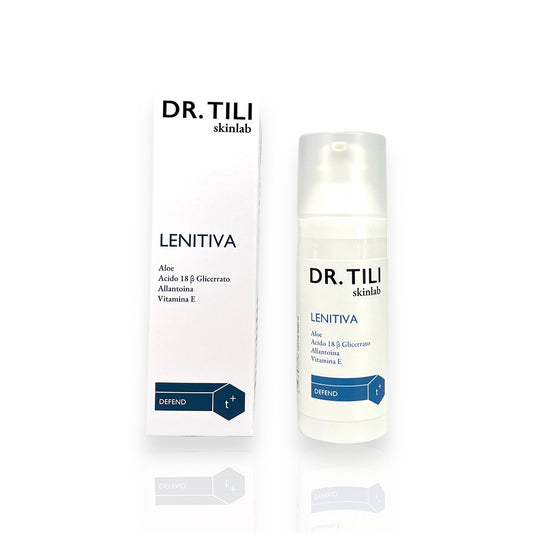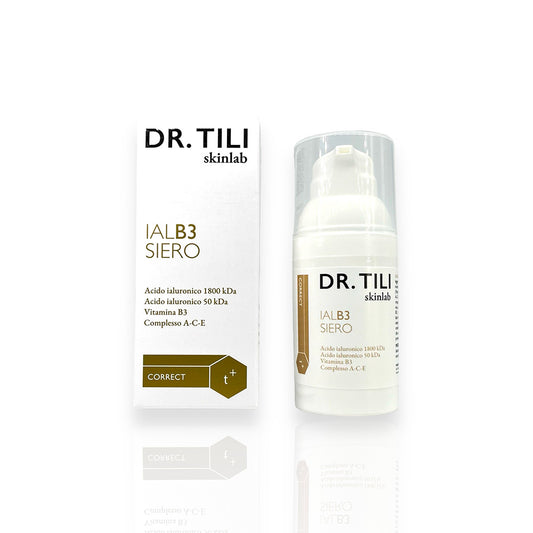ANGELINI (A.C.R.A.F.) SpA
Tachipirina adults 1000mg 10 suppositories
Tachipirina adults 1000mg 10 suppositories
Regular price
€7,60
Regular price
€7,60
Sale price
€7,60
Unit price
per
Tax included.
Shipping calculated at checkout.

Pickup available at Farmacia Tili
Usually ready in 24 hours
PRODUCT NET WEIGHT
PRODUCT NET WEIGHT
EAN
EAN
012745067
MINSAN
MINSAN
012745067
Tachipirina adults 1000mg 10 suppositories is a drug based on paracetamol , an active ingredient known for its antipyretic and analgesic properties. This product is indicated for the symptomatic treatment of febrile conditions such as influenza and exanthematous diseases, as well as for the relief of moderate pain such as headaches, neuralgia and myalgia. The 1000 mg suppositories are particularly suitable for adults, offering an alternative administration option for those who prefer to avoid oral formulations. Thanks to its effectiveness in reducing fever and relieving pain, Tachipirina adults 1000mg 10 suppositories represents a versatile choice for the treatment of common symptoms associated with various medical conditions.
Very rare cases of serious skin reactions have been reported. Reporting of suspected adverse reactions. Reporting suspected adverse reactions that occur after authorisation of the medicinal product is important. It allows continued monitoring of the benefit/risk balance of the medicinal product. Healthcare professionals are asked to report any suspected adverse reactions via the national reporting system at https://www.aifa.gov.it/content/segnalazioni-reazioni-avverse.
ACTIVE INGREDIENTS
Active ingredients contained in Tachipirina adults 1000mg 10 suppositories - What is the active ingredient of Tachipirina adults 1000mg 10 suppositories?
TACHIPIRINA 500 mg tablets. Each tablet contains: active ingredient: paracetamol 500 mg. TACHIPIRINA 500 mg effervescent granules. Each sachet contains: active ingredient: paracetamol 500 mg. excipients with known effects: aspartame, maltitol, 12.3 mmol sodium per sachet TACHIPIRINA 125 mg effervescent granules. Each sachet contains: active ingredient: paracetamol 125 mg. excipients with known effects: aspartame, maltitol, 3.07 mmol sodium per sachet TACHIPIRINA Neonati 62.5 mg suppositories. Each suppository contains. active ingredient: paracetamol 62.5 mg TACHIPIRINA Prima Infanzia 125 mg suppositories. Each suppository contains: active ingredient: paracetamol 125 mg. TACHIPIRINA Children 250 mg suppositories. Each suppository contains: active ingredient: paracetamol 250 mg. TACHIPIRINA Children 500 mg suppositories. Each suppository contains: active ingredient: paracetamol 500 mg. TACHIPIRINA Adults 1000 mg suppositories. Each suppository contains: active ingredient: paracetamol 1000 mg. For the full list of excipients, see section 6.1.EXCIPIENTS
Composition of Tachipirina adults 1000mg 10 suppositories - What does Tachipirina adults 1000mg 10 suppositories contain?
• Tablets: microcrystalline cellulose, povidone, pregelatinized starch, stearic acid, croscarmellose sodium. • Effervescent granules : maltitol, mannitol, sodium bicarbonate, anhydrous citric acid, citrus flavouring, aspartame, sodium docusate. • Suppositories : solid semi-synthetic glycerides.DIRECTIONS
Therapeutic indications Tachipirina adults 1000mg 10 suppositories - Why is Tachipirina adults 1000mg 10 suppositories used? What is it used for?
As an antipyretic: symptomatic treatment of febrile conditions such as influenza, exanthematous diseases, acute respiratory tract conditions, etc. As an analgesic: headaches, neuralgia, myalgia and other moderately severe painful conditions of various origins.CONTRAINDICATIONS SIDE EFFECTS
Contraindications Tachipirina adults 1000mg 10 suppositories - When should Tachipirina adults 1000mg 10 suppositories not be used?
• Hypersensitivity to paracetamol or to any of the excipients listed in paragraph 6.1. • Patients suffering from severe haemolytic anaemia (this contraindication does not apply to the 500 mg oral formulations). • Severe hepatocellular insufficiency (this contraindication does not apply to the 500 mg oral formulations).DOSAGE
Quantity and method of taking Tachipirina adults 1000mg 10 suppositories - How do you take Tachipirina adults 1000mg 10 suppositories?
For children, it is essential to respect the dosage defined according to their body weight, and therefore choose the appropriate formulation. The approximate ages according to body weight are given for information purposes only. In adults, the maximum oral dosage is 3000 mg and rectal dosage is 4000 mg of paracetamol per day (see section 4.9). The doctor must evaluate the need for treatments for more than 3 consecutive days. The dosage schedule of Tachipirina in relation to body weight and administration route is as follows: 500 mg tablets. • Children weighing between 21 and 25 kg (approximately between 6.5 and less than 8 years): ½ tablet at a time, to be repeated if necessary after 4 hours, without exceeding 6 administrations per day (3 tablets). • Children weighing between 26 and 40 kg (approximately 8 and 11 years): 1 tablet at a time, to be repeated if necessary after 6 hours, without exceeding 4 administrations per day. • Children weighing between 41 and 50 kg (approximately 12 and 15 years): 1 tablet at a time, to be repeated if necessary after 4 hours, without exceeding 6 administrations per day. • Children weighing more than 50 kg (approximately over 15 years): 1 tablet at a time, to be repeated if necessary after 4 hours, without exceeding 6 administrations per day. • Adults : 1 tablet at a time, to be repeated if necessary after 4 hours, without exceeding 6 administrations per day. In case of severe pain or high fever, 2 tablets of 500 mg to be repeated if necessary after not less than 4 hours. Effervescent granules of 500 mg in sachets. Dissolve the effervescent granules in a glass of water. • Children weighing between 26 and 40 kg (approximately 8 to 11 years): 1 sachet at a time, to be repeated if necessary after 6 hours, without exceeding 4 administrations per day. • Children weighing between 41 and 50 kg (approximately 12 to 15 years): 1 sachet at a time, to be repeated if necessary after 4 hours, without exceeding 6 administrations per day. • Children weighing more than 50 kg (approximately over 15 years): 1 sachet at a time, to be repeated if necessary after 4 hours, without exceeding 6 administrations per day. • Adults : 1 sachet at a time, to be repeated if necessary after 4 hours, without exceeding 6 administrations per day. In the case of severe pain or high fever, 2 sachets of 500 mg to be repeated if necessary after not less than 4 hours. 125 mg effervescent granules in sachets. Dissolve the effervescent granules in a glass of water. • Children weighing between 7 and 10 kg (approximately between 6 and 19 months): 1 sachet at a time, to be repeated if necessary after 6 hours, without exceeding 4 administrations per day. • Children weighing between 11 and 12 kg (approximately between 20 and 29 months): 1 sachet at a time, to be repeated if necessary after 4 hours, without exceeding 6 administrations per day. • Children weighing between 13 and 20 kg (approximately between 30 months and less than 6.5 years): 2 sachets at a time (corresponding to 250 mg of paracetamol), to be repeated if necessary after 6 hours, without exceeding 4 administrations per day. • Children weighing between 21 and 25 kg (approximately between 6.5 and less than 8 years): 2 sachets at a time (corresponding to 250 mg of paracetamol), to be repeated if necessary after 4 hours, without exceeding 6 administrations per day. Newborn Suppositories 62.5 mg. • Children weighing between 3.2 and 5 kg (approximately between birth and 2 months): 1 suppository at a time, to be repeated if necessary after 6 hours, without exceeding 4 administrations per day. Early Childhood Suppositories 125 mg. • Children weighing between 6 and 7 kg (approximately between 3 and 5 months): 1 suppository at a time, to be repeated if necessary after 6 hours, without exceeding 4 administrations per day. • Children weighing between 7 and 10 kg (approximately between 6 and 19 months): 1 suppository at a time, to be repeated if necessary after 4 - 6 hours, without exceeding 5 administrations per day. • Children weighing between 11 and 12 kg (approximately between 20 and 29 months): 1 suppository at a time, to be repeated if necessary after 4 hours, without exceeding 6 administrations per day. Suppositories Children 250 mg. • Children weighing between 11 and 12 kg (approximately between 20 and 29 months): 1 suppository at a time, to be repeated if necessary after 8 hours, without exceeding 3 administrations per day. • Children weighing between 13 and 20 kg (approximately between 30 months and less than 6.5 years): 1 suppository at a time, to be repeated if necessary after 6 hours, without exceeding 4 administrations per day. Suppositories Children 500 mg. • Children weighing between 21 and 25 kg (approximately between 6.5 and less than 8 years): 1 suppository at a time, to be repeated if necessary after 8 hours, without exceeding 3 administrations per day. • Children weighing between 26 and 40 kg (approximately between 8 and 11 years): 1 suppository at a time, to be repeated if necessary after 6 hours, without exceeding 4 administrations per day. Suppositories Adults 1000 mg. • Children weighing between 41 and 50 kg (approximately 12 and 15 years): 1 suppository at a time, to be repeated if necessary after 8 hours, without exceeding 3 administrations per day. • Children weighing more than 50 kg (approximately over 15 years): 1 suppository at a time, to be repeated if necessary after 6 hours, without exceeding 4 administrations per day. • Adults : 1 suppository at a time, to be repeated if necessary after 6 hours, without exceeding 4 administrations per day. Renal insufficiency. In case of severe renal insufficiency (creatinine clearance less than 10 ml/min), the interval between administrations must be at least 8 hours.CONSERVATION
Storage Tachipirina adults 1000mg 10 suppositories - How is Tachipirina adults 1000mg 10 suppositories stored?
Tablets and effervescent granules : no special precautions for storage. Suppositories: store at a temperature not exceeding 25°C.WARNINGS
Warnings Tachipirina adults 1000mg 10 suppositories - About Tachipirina adults 1000mg 10 suppositories it is important to know that:
In rare cases of allergic reactions, administration should be suspended and appropriate treatment should be instituted. Use with caution in cases of chronic alcoholism, excessive alcohol intake (3 or more alcoholic drinks per day), anorexia, bulimia or cachexia, chronic malnutrition (low reserves of hepatic glutathione), dehydration, hypovolemia. Paracetamol should be administered with caution to patients with mild to moderate hepatocellular insufficiency (including Gilbert's syndrome), severe hepatic insufficiency (Child-Pugh>9), acute hepatitis, in concomitant treatment with drugs that alter liver function, glucose-6-phosphate dehydrogenase deficiency, hemolytic anemia. High or prolonged doses of the product can cause alterations to the kidney and blood, even serious, therefore administration to subjects with renal insufficiency should be carried out only if really necessary and under direct medical supervision. In case of prolonged use it is advisable to monitor liver and renal function and blood count. During treatment with paracetamol, before taking any other medicine, check that it does not contain the same active ingredient, since if paracetamol is taken in high doses, serious adverse reactions may occur. Invite the patient to contact the doctor before combining any other medicine. See also section 4.5. Important information about some of the excipients. Tachipirina 125 mg effervescent granules contains : - aspartame , is a source of phenylalanine. It can be harmful in case of phenylketonuria (deficiency of the enzyme phenylalanine hydroxylase) due to the risk associated with the accumulation of the amino acid phenylalanine. - maltitol : use with caution in patients with rare hereditary problems of fructose intolerance. 70.6 mg of sodium per sachet equivalent to 3.53% of the maximum daily intake recommended by the WHO which corresponds to 2 g of sodium for an adult: to be taken into consideration by people with reduced kidney function or who follow a low-sodium diet. Tachipirina 500 mg effervescent granules contains: - aspartame , is a source of phenylalanine. It can be harmful in case of phenylketonuria (deficiency of the enzyme phenylalanine hydroxylase) due to the risk associated with the accumulation of the amino acid phenylalanine. - maltitol : use with caution in patients with rare hereditary problems of fructose intolerance. - 283 mg of sodium per sachet equivalent to 14.1% of the maximum daily intake recommended by the WHO which corresponds to 2 g of sodium for an adult. The maximum dose for this product is equivalent to 84.6% of the WHO recommended maximum daily sodium intake.: to be taken into consideration by people with reduced kidney function or on a low-sodium diet.INTERACTIONS
Interactions Tachipirina adults 1000mg 10 suppositories - Which medicines or foods can modify the effect of Tachipirina adults 1000mg 10 suppositories?
Oral absorption of paracetamol depends on the rate of gastric emptying. Therefore, concomitant administration of drugs that slow (e.g. anticholinergics, opioids) or increase (e.g. prokinetics) the rate of gastric emptying may lead to a decrease or increase in the bioavailability of the product, respectively. Concomitant administration of cholestyramine reduces the absorption of paracetamol. Concomitant intake of paracetamol and chloramphenicol may lead to an increase in the half-life of chloramphenicol, with the risk of increasing its toxicity. Concomitant use of paracetamol (4 g per day for at least 4 days) with oral anticoagulants may lead to slight variations in INR values. In these cases, more frequent monitoring of INR values should be performed during concomitant use and after its discontinuation. Use with extreme caution and under close monitoring during chronic treatment with drugs that can determine the induction of hepatic monooxygenases or in case of exposure to substances that can have this effect (for example rifampicin, cimetidine, antiepileptics such as glutethimide, phenobarbital, carbamazepine). The same applies in cases of alcoholism and in patients treated with zidovudine. The administration of paracetamol can interfere with the determination of uricemia (by the phosphotungstic acid method) and with that of glycemia (by the glucose-oxidase-peroxidase method).SIDE EFFECTS
Like all medicines, Tachipirina adulti 1000mg 10 suppositories can cause side effects - What are the side effects of Tachipirina adulti 1000mg 10 suppositories?
The following are the adverse reactions of paracetamol organized according to the MedDRA system organ classification. There are insufficient data to establish the frequency of the individual effects listed.| Pathologies of the haemolymphopoietic system | Thrombocytopenia, leukopenia, anemia, agranulocytosis |
| Immune system disorders | Hypersensitivity reactions (urticaria, laryngeal edema, angioedema, anaphylactic shock) |
| Nervous system disorders | Dizziness |
| Gastrointestinal disorders | Gastrointestinal reaction |
| Hepatobiliary pathologies | Abnormal liver function, hepatitis |
| Skin and subcutaneous tissue disorders | Erythema multiforme, Stevens Johnson syndrome, Epidermal necrolysis, Skin rash |
| Kidney and urinary disorders | Acute renal failure, interstitial nephritis, hematuria, anuria |
OVERDOSE
Overdose Tachipirina adults 1000mg 10 suppositories - What are the risks of Tachipirina adults 1000mg 10 suppositories in case of overdose?
There is a risk of intoxication, especially in patients with liver disease, in cases of chronic alcoholism, in patients with chronic malnutrition, and in patients receiving enzyme inducers. In these cases, overdose can be fatal. Symptoms In case of accidental ingestion of very high doses of paracetamol, acute intoxication manifests itself with anorexia, nausea and vomiting followed by a profound deterioration of general conditions; these symptoms generally appear within the first 24 hours. In case of overdose, paracetamol can cause hepatic cytolysis which can evolve into massive and irreversible necrosis, with consequent hepatocellular insufficiency, metabolic acidosis and encephalopathy, which can lead to coma and death. Simultaneously, an increase in the levels of hepatic transaminases, lactate dehydrogenase, and bilirubinemia, and a reduction in prothrombin levels are observed, which may occur within 12-48 hours of ingestion. Treatment The measures to be taken consist of early gastric emptying and hospitalization for appropriate treatment, by administering, as early as possible, N-acetylcysteine as an antidote: the dosage is 150 mg/kg iv in glucose solution over 15 minutes, then 50 mg/kg over the next 4 hours and 100 mg/kg over the next 16 hours, for a total of 300 mg/kg over 20 hours.PREGNANCY AND BREASTFEEDING
If you are pregnant or breast-feeding, think you may be pregnant or are planning to have a baby, ask your doctor for advice before taking Tachipirina adults 1000mg 10 suppositories.
Pregnancy: A large amount of data on pregnant women indicate neither malformative nor fetal/neonatal toxicity. Epidemiological studies on neurodevelopment in children exposed to paracetamol in utero show inconclusive results. If clinically necessary, paracetamol can be used during pregnancy, however it should be used at the lowest effective dose for the shortest possible time and with the lowest possible frequency. Breastfeeding: It is recommended to administer the product only in cases of real need and under the direct supervision of a doctor.DRIVING AND USE OF MACHINERY
Taking Tachipirina adulti 1000mg 10 suppositories before driving or using machinery - Does Tachipirina adulti 1000mg 10 suppositories affect driving or using machinery?
Tachipirina does not alter the ability to drive vehicles or use machinery.



